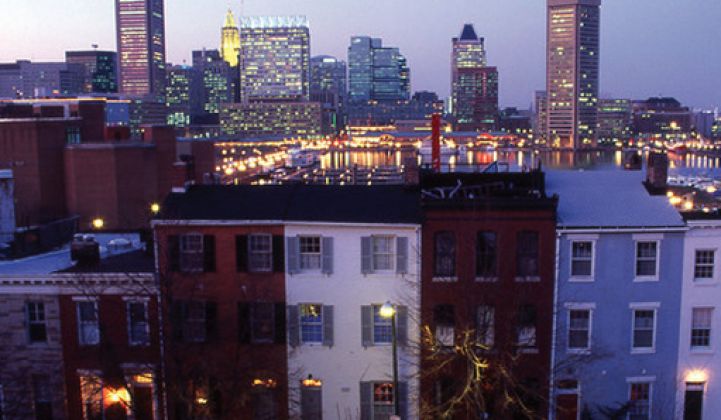Last summer, 315,000 Baltimore Gas & Electric customers were part of the utility’s Smart Energy Rewards program.
Smart Energy Rewards allows customers to earn a rebate of $1.25 for every kilowatt-hour of energy reduced during peak events. It’s similar to programs at other utilities, but BGE’s initiative is impressive in its scale. This summer, about 900,000 residential customers will be enrolled in the program, and by next year it will have more than 1 million participants.
“We wanted a way [for] customers [to] benefit from smart meters directly,” said Ruth Kiselewich, director of demand-side management programs at BGE. The utility did not just want to rely on operational benefits to justify its smart meter investment.
In the summer of 2013, there were four “energy saving days” in which 82 percent of customers received a credit toward their summer bill. The average cost reduction was $9 per event. The savings are weighed against the highest three days of energy usage in the previous two weeks. In past years, weekends have been calculated as part of the fourteen-day baseline, but that practice will be discontinued beginning in 2014.
The program was a long time in the making. BGE conducted four years of pilots to test different pricing options, such as critical peak pricing, where energy costs more at certain times, versus rebate-only programs. The utility found that the energy savings accruing from peak pricing and peak rebate schemes were similar, but that the rebate approach significantly improved customer satisfaction.
Unlike other new residential demand response programs, Smart Energy Rewards does not hinge on customers possessing any particular devices, such as two-way digital thermostats. Instead, BGE expanded its partnership with Opower, Accenture and Oracle to build the program. Accenture provided consulting support, Oracle provides backend support, and Opower uses its behavioral science expertise to engage customers and provide tips for reducing energy.
Customers can choose to get alerts via email, text or phone the day before an event. Customers are asked to reduce energy use between 1 p.m. and 7 p.m. One of the keys is providing feedback rapidly, said Tom Mercer, group product manager at Opower. “It was very important to give [customers] feedback the next day.”
Another key for the utility is ensuring that the messages can be sent to more than 1 million customers without any problem, and then being able to measure the load shed on the back end. For BGE, the program is part of the utility’s demand response bid into PJM’s capacity market. It cannot just hope that it achieves a sizable load reduction -- it needs to understand how much load is likely to come from residential customers.
“We look at Smart Energy Rewards as a key component of our peak reduction capabilities,” said Kiselewich.
One of the challenges of setting up the program was gathering accurate email addresses or mobile phone numbers to which to send the alerts. BGE set up a standalone call center to engage customers and update information, and it will continue that effort this year as the program expands.
By 2015, Kiselewich expects to have all residential customers enrolled in the program. Customers are allowed to opt out of receiving alerts, but all residential customers will remain enrolled in the program since there is no penalty or downside associated with participation.
BGE has no plans at this time to add a critical peak pricing program, but building a successful peak-time rebate program is the first logical step toward a program that would charge customers different rates at different times.
In years to come, customers who save the most with Smart Energy Rewards may want to try out another plan in which they could save even more, even if it means paying a higher price at some hours -- especially if they have some automation, such as a two-way smart thermostat.
“You can use behavioral programs to be a feeder for more automated programs,” said Mercer.
For now, however, BGE is focusing on getting the rebate program right before looking down the road to what’s next.



